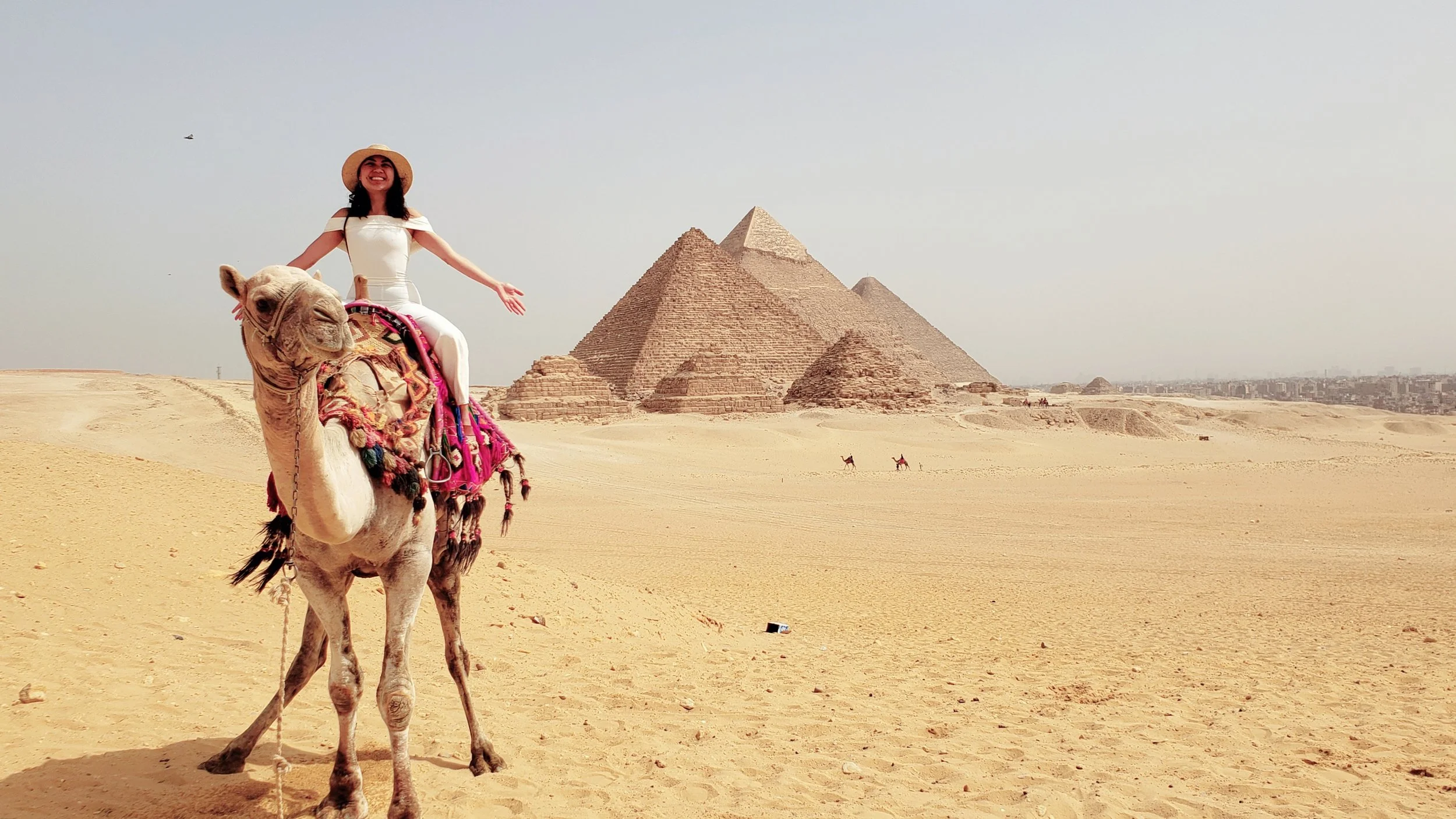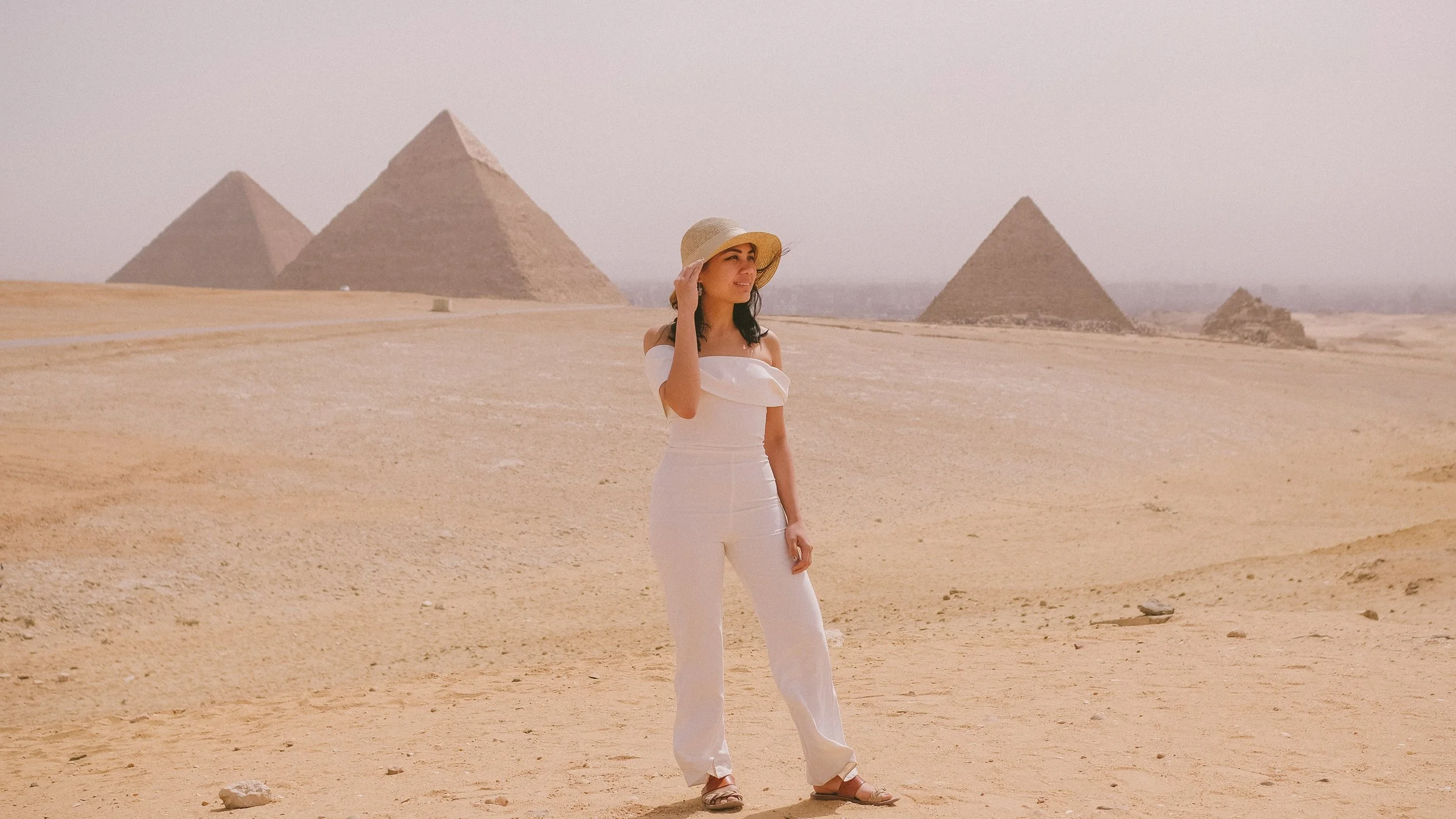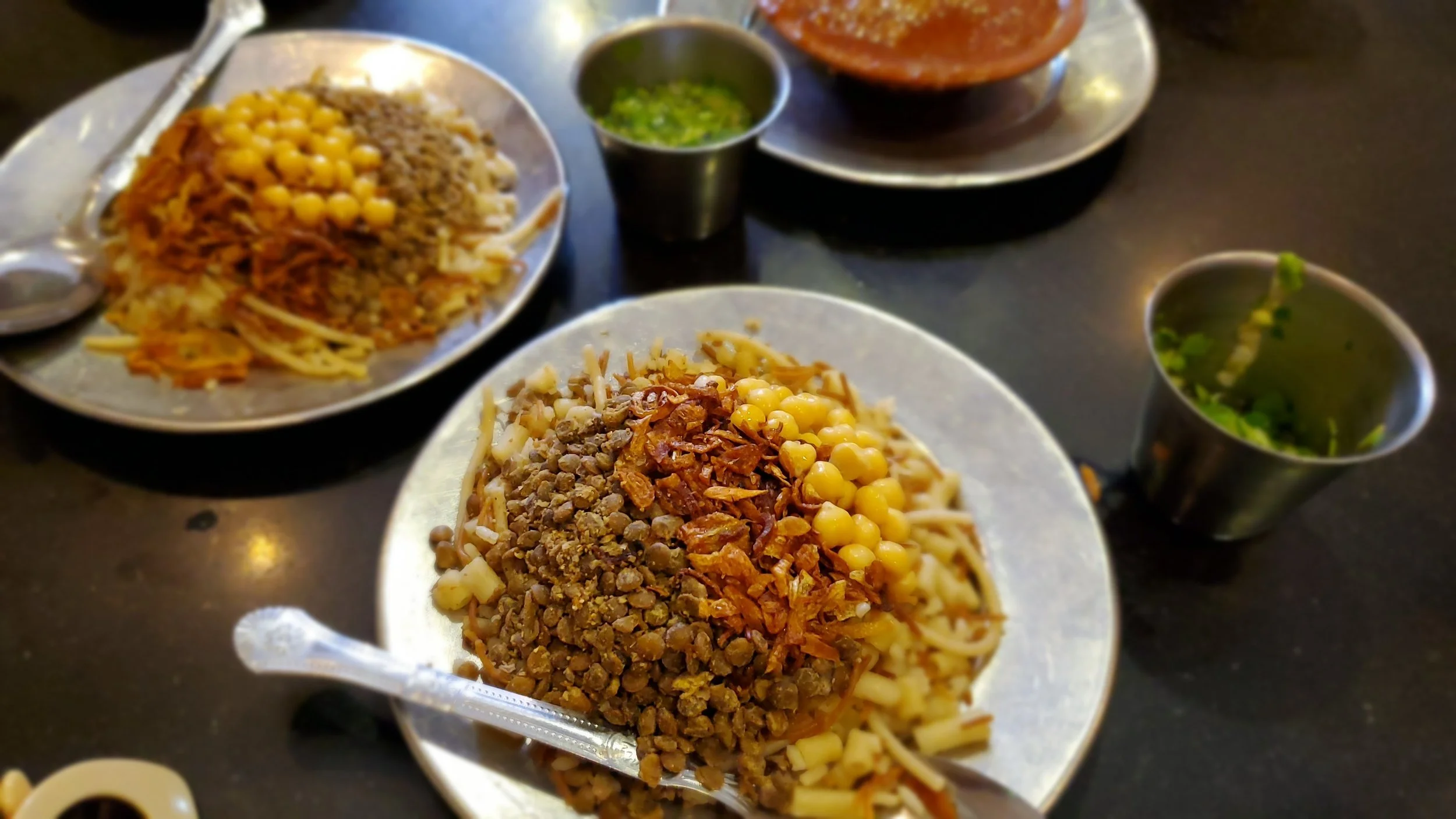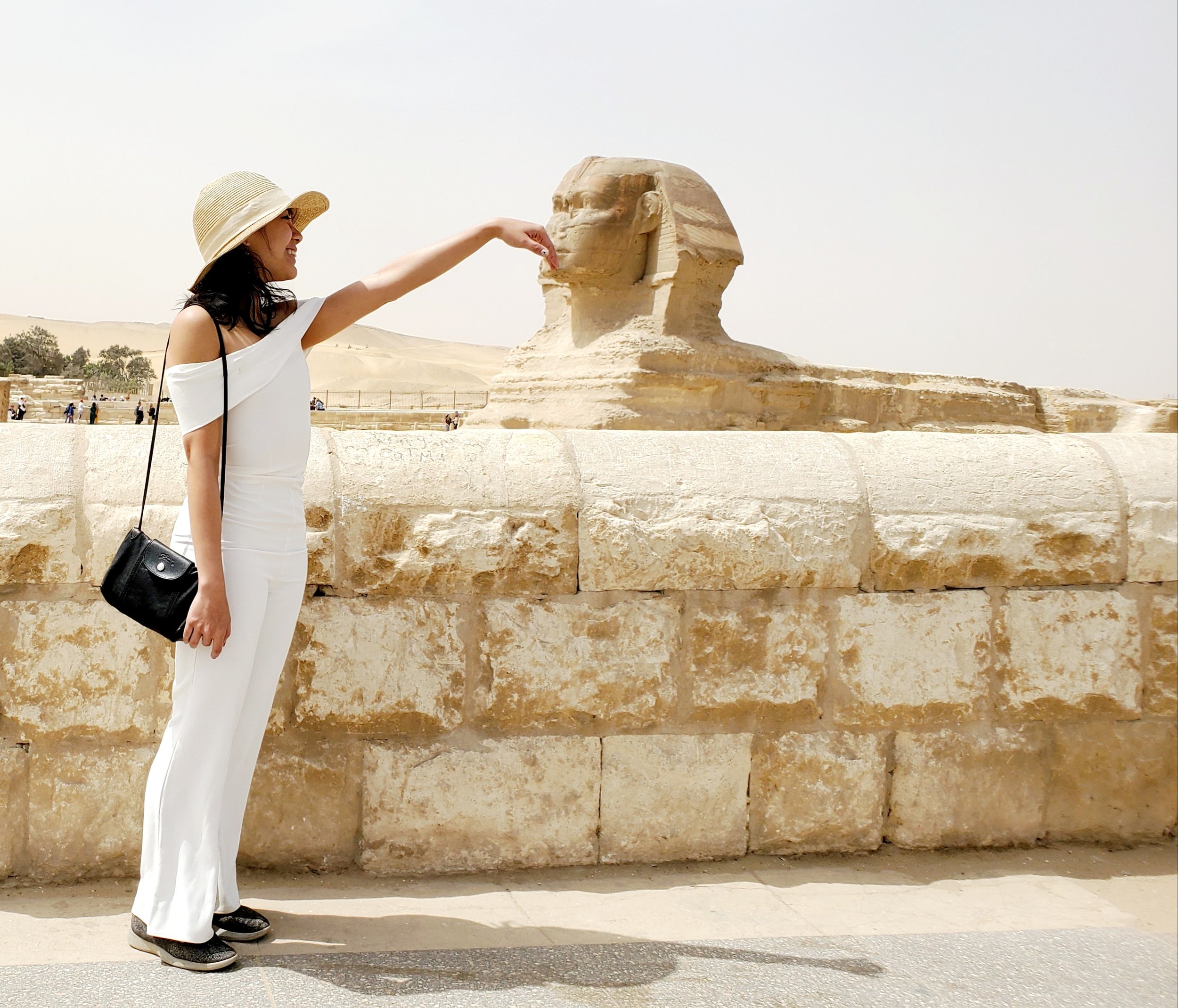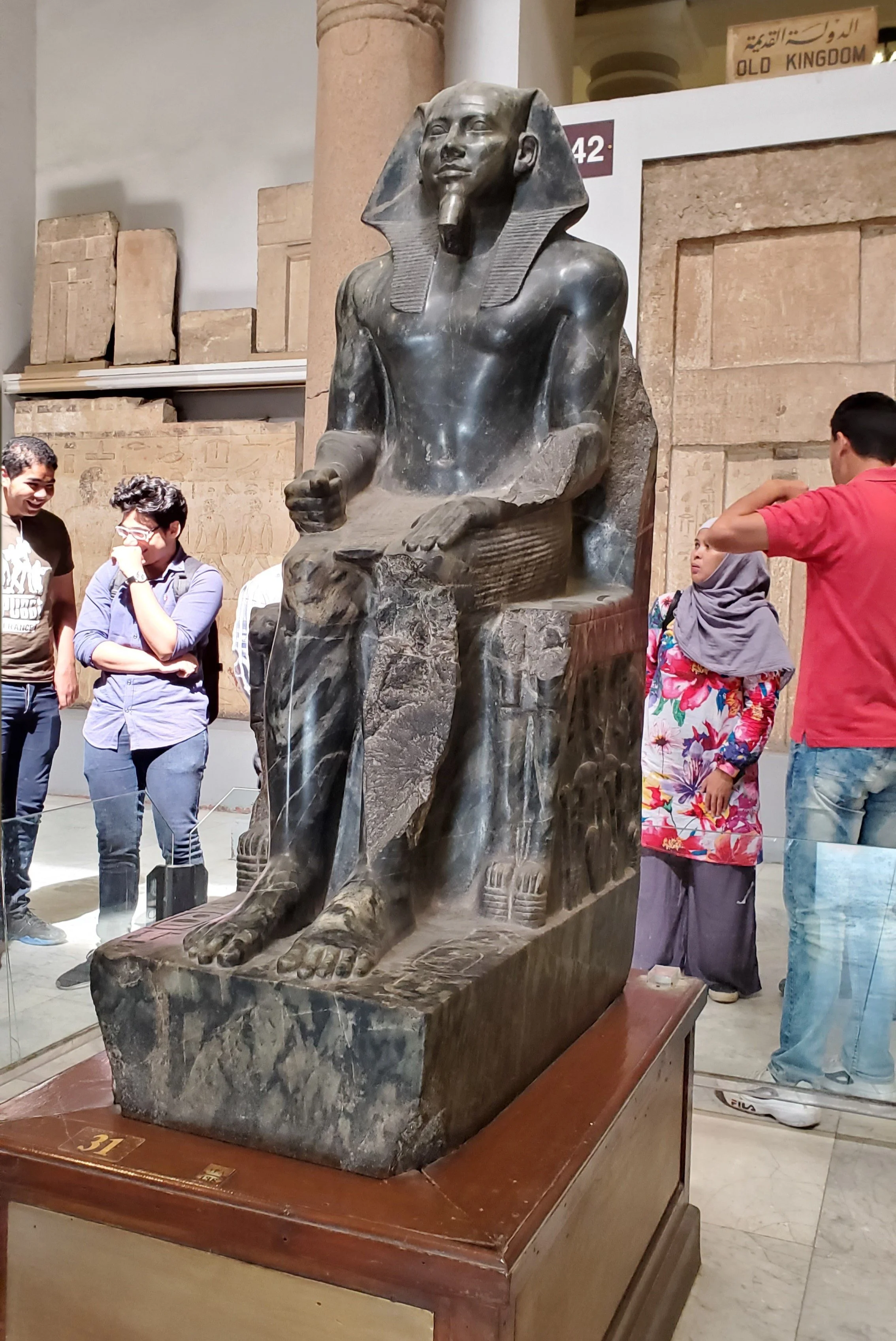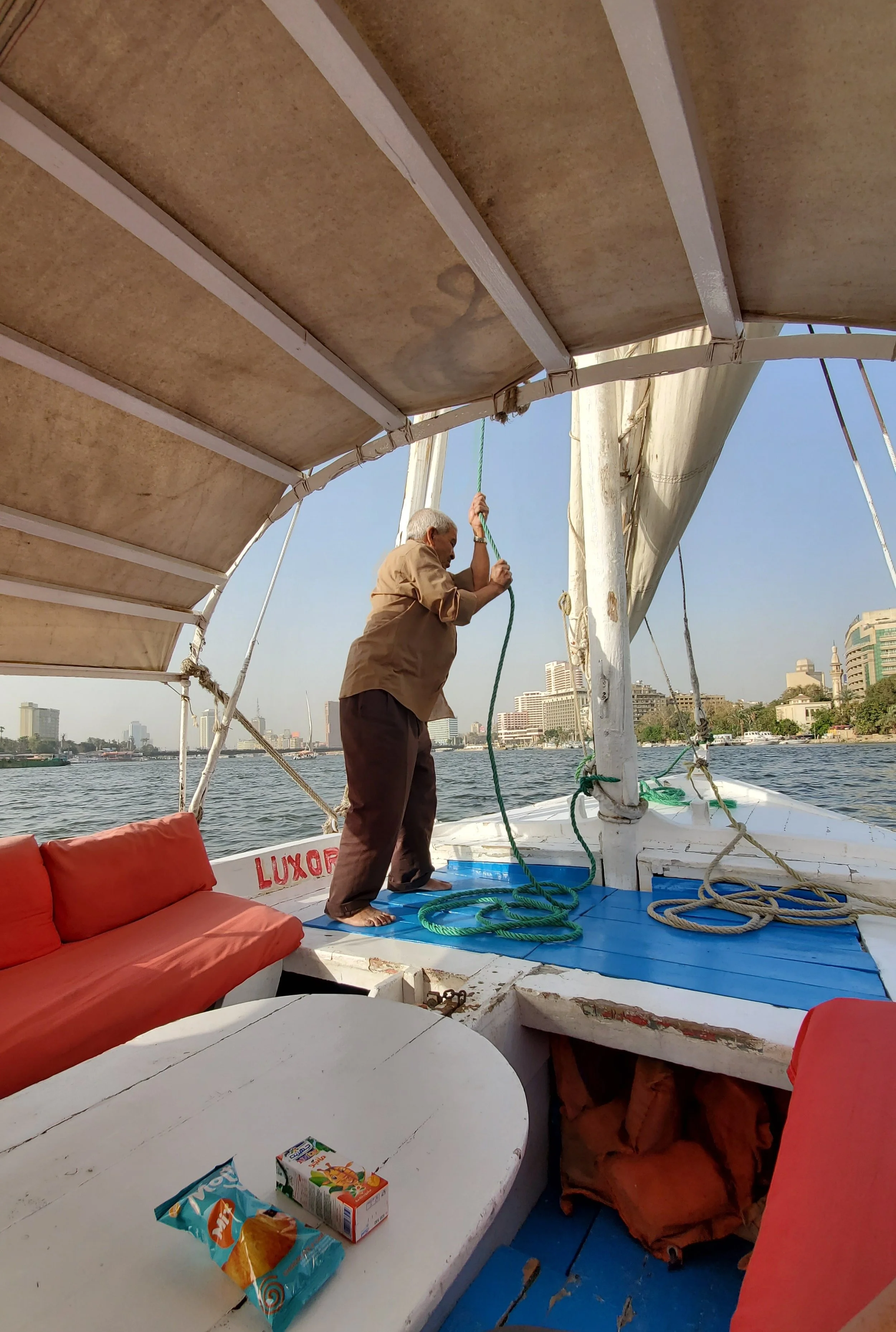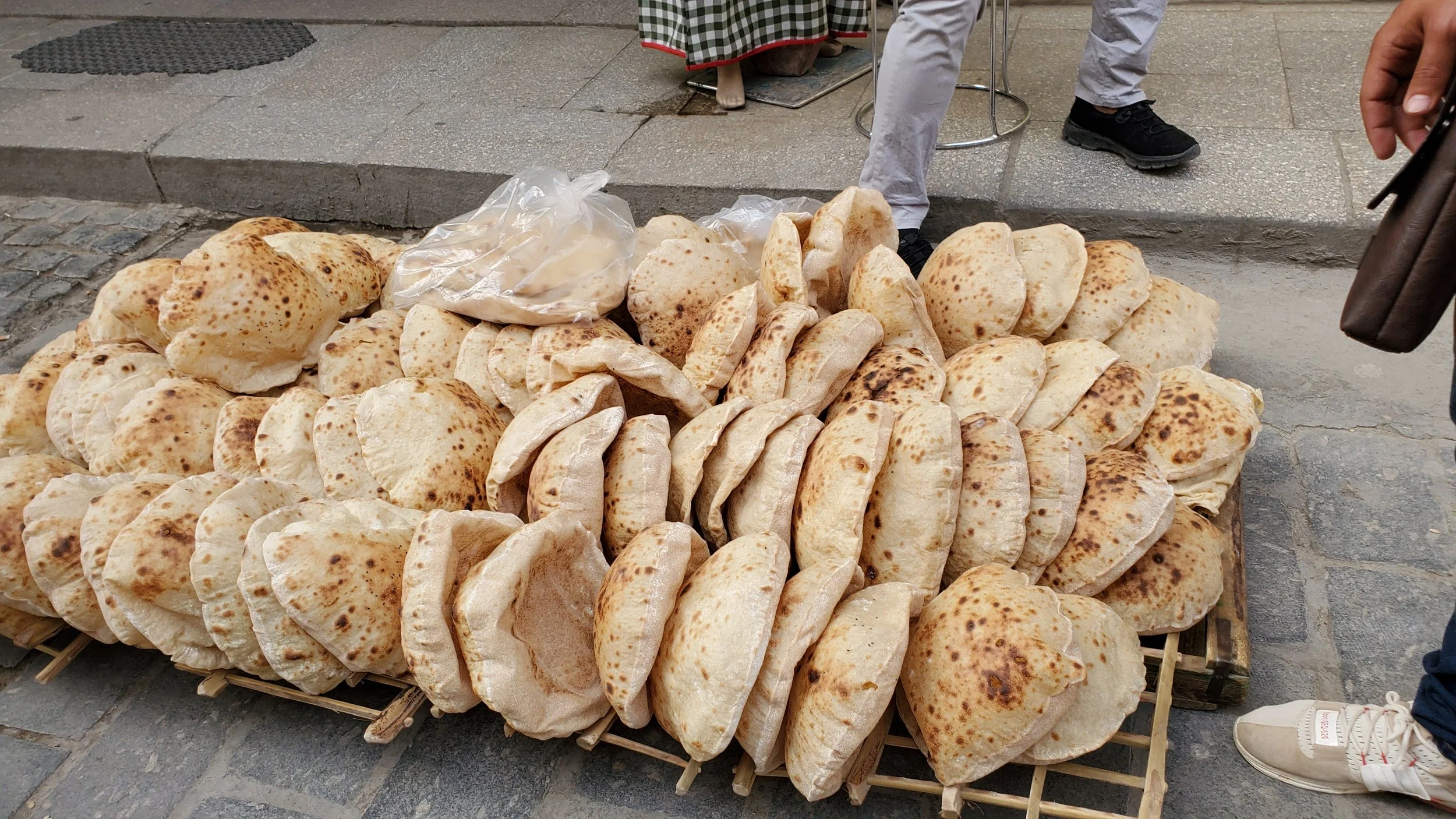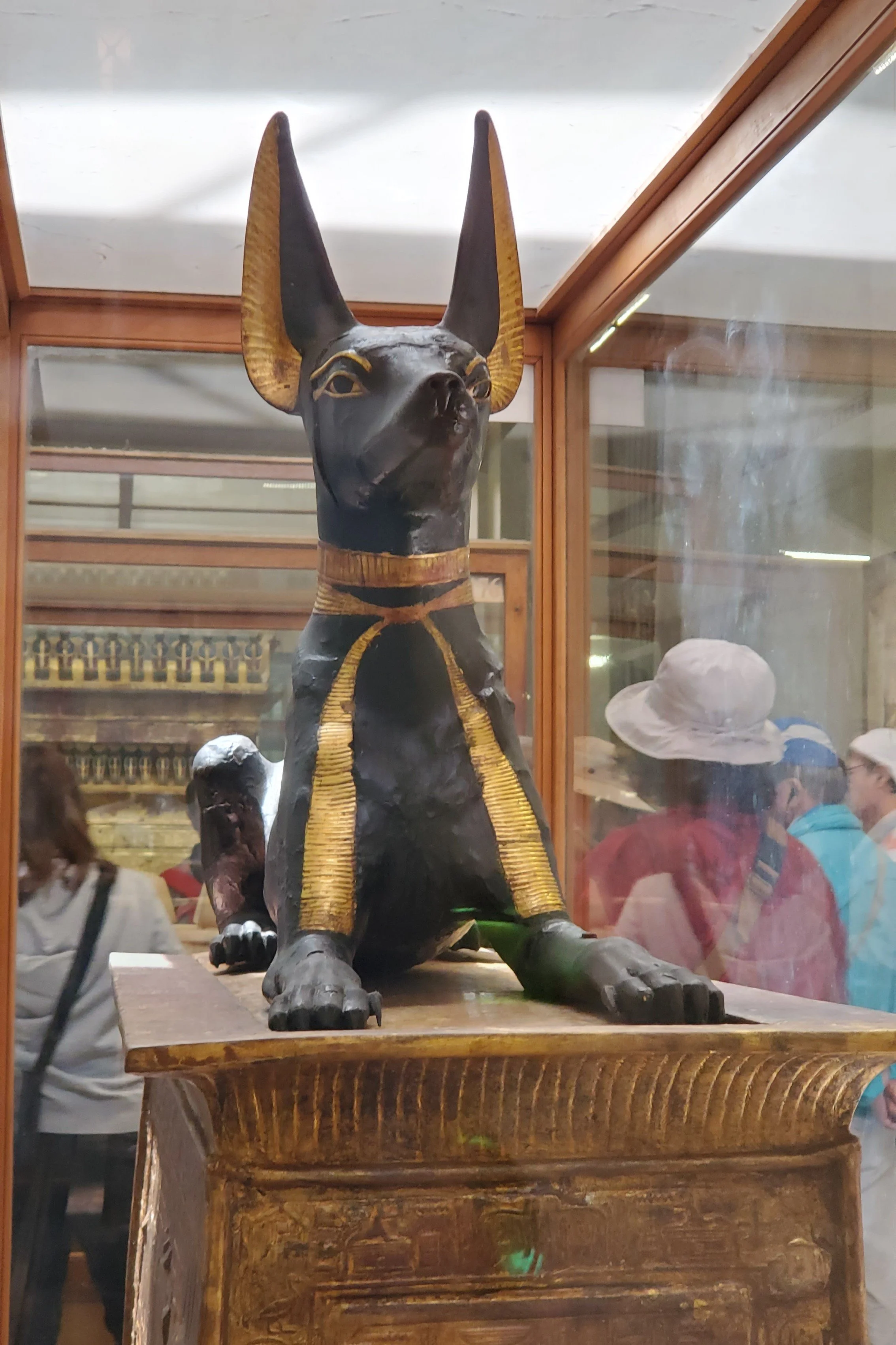Cairo
Cairo was tough for me. With 20 million people and a notoriously corrupt government, Cairo was quite the culture shock after perfect, civilized Amman. I could feel the pollution in my lungs as I attempted to explore the city. I was unable to cross a street without risking my life because traffic laws barely exist, so I resorted to shamelessly walking alongside locals who happened to be going my way. And it felt like a third of the Cairenes weI met were either trying to scam me or at least pressure me for tips, as if all of Cairo were Times Square. If Jordan gave me hope for the Middle East (and humanity in general), Egypt reminded me of why I need so much hope.
That’s not to say that I regret visiting. I could have flown straight to Aswan for the temples in southern Egypt and merely stopped by Cairo on a daytrip to see the pyramids, but that wouldn’t feel right -- the same way that I don’t think it’s right to visit the Yucatán peninsula without exploring Mexico City as well, or to go on a safari in South Africa without also visiting Johannesburg.
The best thing I did in Cairo was take a food tour with the only food tour company in the city, Bellies En-Route. For nearly six hours, my guide Laila impressively led seven naive tourists through the crazy streets of downtown Cairo to eight different spots. She took us to places we never would have found on our own, and everything we tried was incredible. In fact, I returned to two of the restaurants later because I loved them so much (and it’s kind of a hassle trying new restaurants in Cairo on your own).
I rode a camel to the Giza Pyramids. The camel rides got me some great photos, especially since the herders knew exactly where to place me for the perfect shots, but I couldn't help but compare them to the peaceful camel rides I had taken through the Sahara Desert in Morocco and Tunisia. Like everything in Egypt, the camel ride felt transactional, and my camel herder bluntly told me to give him a tip while I was still riding my camel.
The Giza Pyramids were constructed roughly 4,500 years ago. They’re so old that the time period in which Cleopatra lived is closer to us than to the Pyramids. Pharaohs erected these massive pyramid tombs for themselves, filling them with everything one might need in the afterlife. The largest of the Giza Pyramids was dedicated to Pharaoh Khufu. Khufu’s son, Pharaoh Khafre, built the second one, as well as the Great Sphinx, a limestone monument with the body of a lion and Khafre's own head. Sphinxes were guard dogs of the pyramids. The mere existence of these pyramids testifies to the resourcefulness and organization of ancient Egypt.
While I typically don’t have much interest in Egyptian artifacts, touring the colossal Egyptian Museum ended up being one of my favorite activities in Cairo. Seeing artifacts in the actual country instead of in England, France, and Germany is a sensational feeling. Commissioned in 1835 to stop widespread plundering and looting of the country’s many archaeological sites, the Egyptian Museum is home to 120,000 Egyptian artifacts. An entire section is dedicated to Tutankhamen, the most famous of all Egyptian pharaohs, as his tomb was relatively intact when it was discovered in 1922.
My other favorite activity was sailing down the Nile on a felucca. These traditional sailboats are perfect for escaping the hustle and bustle of the city. It was the only time I felt calm in Cairo. Even with the invention of motorized boats, feluccas have remained the primary transportation of the Nile.
Those were the highlights of my time in Cairo; honestly, everything else was either underwhelming or tension-filled. The airport is dysfunctional, traffic lanes are meaningless (a two-lane road becomes a four-lane road in Cairo), Ubers don’t have seatbelts, and even the supposedly fancy part of Cairo (Zamalek) felt like a desolate place to live since people just seemed to stay in their mansions. I’m reluctant to blame all of this on Egypt itself because so many of its problems stem from colonialism. It’s a real shame, especially for Egypt, because the citizens of this country seem detached from their impressive history.
Do
Eat
Perhaps my favorite thing about Cairo is “eish baladi,” the traditional flatbread that is delivered to every neighborhood so locals are ensured this staple at a subsidized price. I would see bikers with a tray of eish baladi balanced on their heads, dropping off these trays on street corners for everyone to grab. Tourists are able to partake, but at a higher price of course.
Eat koshari, ful (mashed fava beans with pita bread), ta’ameya (falafel made of fava beans), molokhia (okra stew), and hamam mahshi (grilled pigeon).
Buy basbousa and kunafa at El Abd and Mandarine Koueider.
Tips
Tips
Tips Tips
I struggled to get an e-Visa before the trip (surprise, surprise, the website was not functioning properly), so I resorted to getting my visa upon arrival. Fortunately, this was a simple process. Just go to a bank window by baggage claim and pay $25 for a visa sticker. Bring this to customs, and they’ll put the sticker on a blank page in your passport.
Ubers are not allowed at the airport, so you’re going to have to walk out to the parking lot and request one there. Be ready for no seat belts.
Stay at a hotel. I booked an Airbnb because I usually prefer apartment rentals while staying in big cities so I can feel like a local, but I would not recommend an Airbnb in Cairo. It was always difficult for drivers to find my apartment, and, while I did find a decent place in the center of town, it was definitely one of my least favorite Airbnbs I’ve ever stayed in.
For every tour except the food tour, I used Emo Tours, which seems to be the biggest company (and probably sponsored by the government) in Egypt. It worked pretty well. Most of my guides were entertaining and knowledgeable, and the company was good about communication, but I did notice that my one-hour felucca ride ended up being only 20 minutes, and my 30-minute camel ride ended up being only 15 minutes. Regardless, I definitely recommend having a guide at the Egyptian Museum, Giza Pyramids, and Khan El Khalili Bazaar because people will hassle you less when they see that you’re with a local, and it’s nice to have guides deal with purchasing tickets.At some of the sites, you have an option of paying a fee to take photos inside. Pay to take photos inside Abu Simbel. Not doing this is one of my biggest regrets.
Be prepared to tip everyone.
